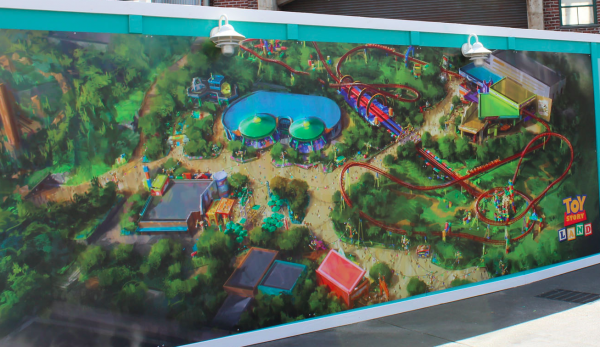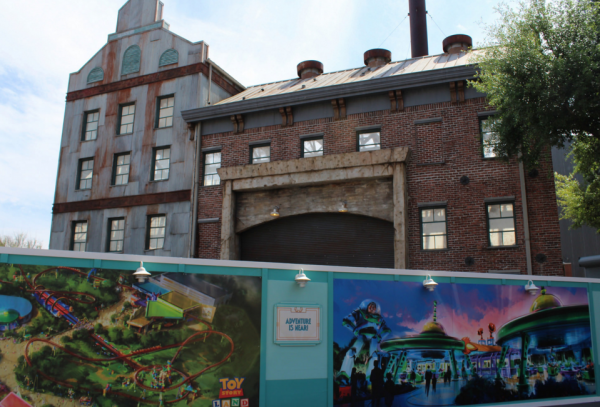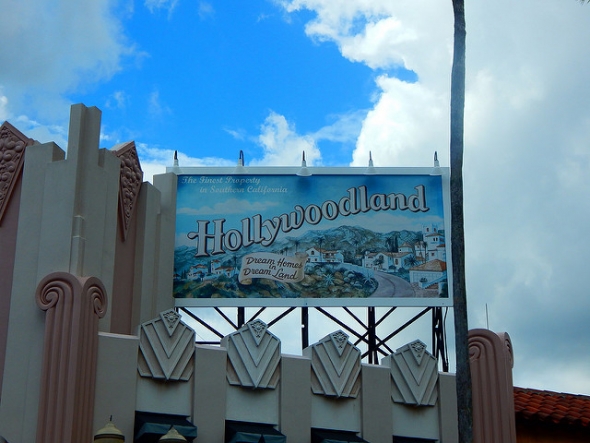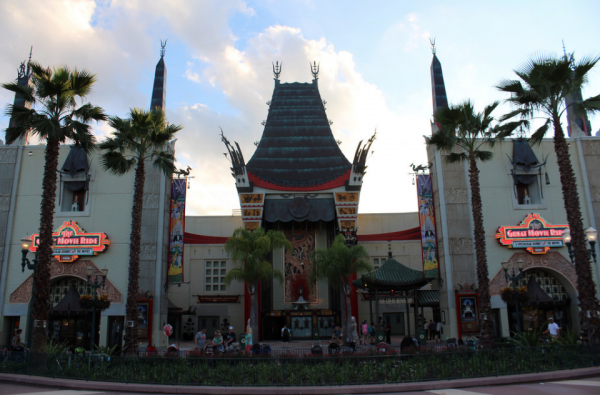
When you think of the various Disney theme parks, distinct premises reflexively enter your mind. Disneyland is the place that started the craze, the proverbial Happiest Place on Earth. Magic Kingdom is the East Coast equivalent, the Most Magical Place on Earth as well as the most popular theme park on the planet. Disney California Adventure is where the majestic mountains of Radiator Springs provide the backdrop for Cars Land. Disney's Animal Kingdom is the place where Disney created a hybrid of zoo and amusement park. And Disneyland Paris is…the “cultural Chernobyl” known as EuroDisney, which isn’t a good thing.
For better and for worse, most Disney gates enjoy a specific identity. One of the parks at Walt Disney World is the glaring exception. When theme park tourists think of Disney’s Hollywood Studios, ambiguity and almost lost memories are all that arise. Once, the Earffel Tower stood as the landmark identifying Disney-MGM Studios. Later, the Sorcerer’s Hat lorded over the central hub, reminding guests where they were. Today, a hodgepodge of attractions, many of them quite good, comprises the core of Disney’s third gate. But Disney’s Hollywood Studios continues to lack definition. It is the rare Disney theme park that suffers from an identity crisis.
As everyone knows by now, park planners have big ambitions for the third gate. It will eventually emerge from its current cocoon as a largely disappointing half-day park into a resplendent butterfly, ascending into greatness thanks to the impending presences of Star Wars Land and Toy Story Land, a pair of locations that sound like the most desirable spots in a game of Movie Monopoly.
In the interim, critics rightfully assail this gate for its incongruous nature. Ostensibly a movie lover’s paradise, some of its most famous attractions center on a half-century old television show and a rock band whose musicians are all approaching their 70th birthday. Meanwhile, some of the attractions with direct ties to classic Hollywood have shut down in order to make way for potentially more popular events that move Hollywood Studios even further away from its core concept.
How did such a noble, grand idea for a theme park fall erode so dramatically over time? What led to the fall of Disney-MGM Studios? Why have not one but two different would-be iconic landmarks wind up deconstructed? And will the park rise like a phoenix from the ashes once it receives the fresh infusion of entertainment from Pixar and Star Wars? Or is this another desperate ploy that is doomed to fail?
Simply stated, most Disney theme parks succeed to a degree beyond all rational expectations. Why hasn’t Hollywood Studios? Let’s investigate its origins to learn why Imagineers suffered a rare misstep in park introduction, one that was entirely beyond their control. We’ll detail the messy public divorce between two major corporations that undid this new park before it ever began. Then, we’ll look at the steps they’ve taken since 1989 to bandage the festering wound that is the half-day park at the third gate. Finally, we’ll look forward to make some educated guesses about how much Star Wars Land and Pixar Place will mean to the bottom line of the park. Here, then, is the shaky history of Disney’s Hollywood Studios, the most organic yet also most awkward of all the company’s theme parks.
History repeats itself
Competition brings out the best in people. This belief has become one of the linchpins of the business world to the point that the laws of the land expressly prohibit monopolies. Even The Walt Disney Company, who owns a functional monopoly in the theme park industry, is subject to outside pressure. Whether they should worry about what other parks are doing is up for debate.
For instance, Universal Studios Recreation Group, a division of NBCUniversal (owned by Comcast), has grown at an exponential rate ever since they acquired the license to the Harry Potter franchise. This fact is important for two reasons, one of which we’ll discuss below. For now, what matters is that from 2009 to 2015, Disney theme park traffic increased 18.8 million. Universal Studios garnered 21.1 million new vacationers.
On the surface, the gap seems modest, but that’s because I’ve only provided you with half the story. In 2009, Disney’s Parks and Resorts division enjoyed attendance of 119.1 million. Universal Studios was only at 23.7 million. Ignoring percentage growth, which sometimes paints an inaccurate picture of a situation, Universal Studios has added more park guests than its more storied opponent in the oligopoly of theme park tourism. It managed this feat despite starting at a wildly disadvantageous position.
In short, Universal Studios is eating Disney’s lunch in the game of expanding the brand. In a way, this situation is prophecy self-fulfilled for Disney execs. What’s happening today is something that park planners prophesied a long time ago, all the way back during the mid-1980s.





Comments
LOVE HOLLYWOOD STUDIOS! Three of the best rides at Disney are at HS... Tower of Terror, Rock-n- Rollercoaster, and Toy Story, Mania. Would have included Star Tours but it's so short. The other Star Wars attractions are great too. My family has always loved HS it's the highlight of our trips to Disney.
another great article! this site is amazing!
having recently visited both hollywood studios & WWoHP, it is easy to see how disney influenced universal in development as WWoHP really stands out as a full-concept and exceptionally detailed area compared to the rest of universal (which is more of a traditional amusement park). I hope that disney's new star wars and the other lands help flesh out hollywood studios as it is lacking and disjointed compared to their other parks.